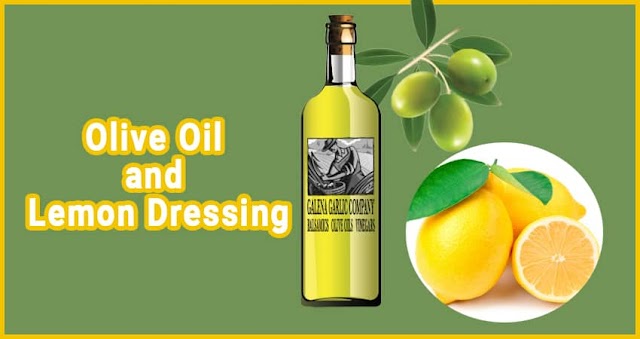Cats keep body curiosities that few animals can boast about. One of the most wonderful rarities is located in the league. This part of the feline body surprises with its formation and the variety of functions it performs.
The tongue of cats is a vital tool for the animal and thanks to this article you will discover why. Keep reading and take note of the curiosities of this organ!
Why is Cat Tongue Rough?
Probably, your cat has ever given you a lick and you may have noticed that his tongue is not like that of humans, it is scratchy and not at all soft. Roughness is a basic characteristic of this feline organ, and it is an evolutionary adaptation that has enabled them to survive and thrive in the wild. However, you may wonder: why does it give us that feeling?
The explanation is simple. Cats have a group of small filaments on their tongues that serve as human taste buds.
Many people believe that they are hairs, however, the main compound of these is keratin. This substance, which also makes up the nails, gives felines a series of essential qualities.
Grooming, hydration, feeding, and even survival of the cat are influenced by these filaments that are located on the tongue. Do you want to find out their specific functions? We will tell you about them in the next section!
Functions of the Language of Cats
Both the entire tongue and its filaments have a series of basic and unique functions in the feline body, which demonstrate the importance of this organ in the day-to-day life of the animal.
- Gentle and Brush the Hair
Every cat needs several daily grooming, which they get thanks to the feline tongue. The licking that they carry out most of their body is a great way to remove any dirt that has accumulated in their fur.
The filaments located in this organ fulfill the function of a comb and remove the tiniest dirt that can be detected in any area of the feline hair.
Although it is a very important function, these keratin elements have other more specific qualities, as you can see in later sections.
- The Tongue Relaxes the Cats
In addition to cleaning itself, the cat's licks have a relaxing intention. Whenever the animal wants to calm down, it will opt for this innate feline technique. For this reason, excessive licking can be clear evidence that our pet is suffering from stress.
Stress in cats is a complex process that can be difficult to detect. Perhaps one of the most obvious signs is hair loss in the cat. In order to be able to recognize this pathology that should concern us so much as soon as possible, we give you all the information about it in this article.
- A Hunting Tool
Cats, as carnivorous and predatory animals, have bodily aids that make it easier for them to hunt other animals. One of these innate advantages is located in the feline tongue.
The keratin filaments they have are perfect tools for the hunted animal to be trapped, without the possibility of fleeing. In this way, this organ fulfills a key survival function.
How Do Cats Drink?
Like many other animals, cats use their tongues to transfer any liquid to their body. However, although we believe that they use a simple technique to absorb the water or milk that we provide them in their day-to-day lives, the way to carry out this action is a rather curious challenge to gravity.
To ingest any liquid, these animals do not perform the usual movement that we see in other species. The normal thing is that the tongue of the animal develops an upward turn to push the liquid toward the mouth.
However, the cat's tongue performs the reverse movement. The felines fold their tongues downwards and with a powerful and rapid impulse, they shoot the liquid into their mouths. In this way, they ingest large amounts of water or milk at an astonishing speed.
The skill with which these animals are born allows gravity not to be an impediment when using this technique!
Benefits of Rough Tongue of Cat
The roughness of a cat's tongue offers several benefits to the animal:
1. Grooming Efficiency: The rough texture of a cat's tongue acts like a natural brush or comb. When cats groom themselves, the backward-facing barbs on their tongues help to remove dirt, debris, and loose hair from their fur. This self-grooming process helps to keep their coat clean, free from tangles and well-maintained. It also stimulates the production of natural oils, which helps to keep their fur healthy and shiny.
2. Hairball Prevention: Cats are meticulous groomers, and during the grooming process, they often ingest a significant amount of loose hair. The roughness of their tongues helps to collect and remove loose hair from their coats. By swallowing less hair, cats reduce the likelihood of developing hairballs, which can cause discomfort or lead to digestive issues.
3. Enhanced Sensitivity: The papillae on a cat's tongue not only provide roughness but also contain numerous nerve endings. This heightened sensitivity allows cats to assess the texture, temperature, and taste of food more effectively. The rough tongue helps in manipulating and extracting pieces of meat from bones or lapping up liquids efficiently.
4. Bonding and Social Interaction: Cats also use their tongues to groom other cats or their human companions. This behavior, known as allogrooming, helps to strengthen social bonds within a group of cats or between a cat and its human caretaker. The roughness of their tongues ensures effective grooming by removing dirt, and parasites, and providing a comforting sensation during these interactions.
5. Sensory Exploration: Cats use their tongues to explore their environment and objects around them. By licking different surfaces, they can gather information about the texture, taste, and scent of various items. The roughness of their tongues allows them to gather more tactile feedback, aiding in their sensory exploration.
In summary, the roughness of a cat's tongue facilitates efficient grooming, helps prevent hairballs, enhances sensory perception, promotes bonding, and aids in sensory exploration. It is a unique adaptation that contributes to a cat's overall well-being and survival.
People Also Ask
Do all cats have rough tongues?
While the majority of cats have rough tongues, not all cats have the same level of roughness. The rough texture of a cat's tongue is primarily due to the presence of backward-facing barbs called papillae. However, some cat breeds, such as the Maine Coon, may have smoother tongues compared to others. Despite variations, the roughness of most cats' tongues serves important functions like grooming, efficient consumption of food and liquids, and sensory perception.
Why are Cat’s Tongues Rough and Dogs Smooth?
Cats have rough tongues due to the presence of tiny barbs called papillae, which aid in grooming, efficient food consumption, and sensory perception. These barbs help remove dirt, debris, and loose hair from their fur. In contrast, dogs have smoother tongues. The difference is attributed to the diverse evolutionary adaptations of each species. While cats rely on their rough tongues for grooming and capturing prey, dogs have evolved with smoother tongues, better suited for drinking water and panting to regulate body temperature.










0 Comments